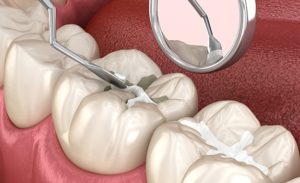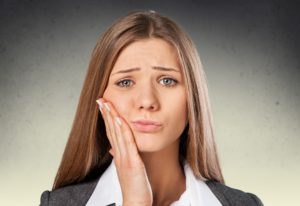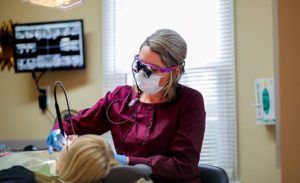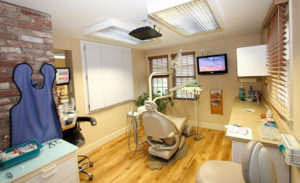J. Peter St. Clair, DMD Blog
EVERYTHING IS CONNECTED
July 3, 2023
 Disease is defined as, “a disorder of structure or function in a human, animal, or plant, especially one that produces specific signs or symptoms or that affects a specific location and is not simply a direct result of physical injury.” Symptoms are those which are felt and signs are those which are seen. Disease may show signs but no symptoms. Two areas dentists see signs of, often without symptoms, are bruxism (grinding)/clenching and GERD or gastroesophageal reflux disease, causing chemical erosion of the teeth.
Disease is defined as, “a disorder of structure or function in a human, animal, or plant, especially one that produces specific signs or symptoms or that affects a specific location and is not simply a direct result of physical injury.” Symptoms are those which are felt and signs are those which are seen. Disease may show signs but no symptoms. Two areas dentists see signs of, often without symptoms, are bruxism (grinding)/clenching and GERD or gastroesophageal reflux disease, causing chemical erosion of the teeth.
Some people present with symptoms relating to these two issues, but more often than not, people do not have symptoms. Dental patients who present with signs of tooth wear or acid destruction are riskier to treat. Riskier because the “issues” are often times, and maybe even most often, not treated. This is a significant reason for tooth structure breakdown and shorter life-span of dental work.
However, that’s not really what I wanted to highlight in this week’s column. There are many reasons why people have these two issues. Sometimes these problems are preventable with simple lifestyle changes; other times they need more aggressive treatment because they are coming from the central nervous system or related to something else going on in the body. They can also be caused by certain medications.
In today’s world, everyone is being pushed to their limits in just about every aspect that you can imagine. More is demanded with less time to accomplish. All this can become a source of stress, anxiety and even depression.
This “epidemic” spurred the development of newer medications with fewer side effects to help manage these conditions and hence, the SSRIs (selective serotonin reuptake inhibitors) were born in 1988. Since then, recent reports show that the use of the SSRIs (i.e. Paxil, Zoloft, Prozac, Celexa, Effexor, etc.) has increased more than 400 percent!
Dentists see the signs of bruxism or clenching/grinding of the teeth on a regular basis, and some of it is the result of stress and anxiety. But another factor that we have to keep in mind is that patients are now taking more anti-anxiety and antidepressants than ever before in history. It is often overlooked, but the SSRIs and even some of the SSNRIs (Selective Serotonin Norepinephrine Reuptake Inhibitors) often increase bruxism or clenching and grinding effects at night.
This leads to patients having an increased frequency of headaches, jaw pain and other symptoms of clenching/grinding. I have seen many patients who have presented with increased frequency and intensity of symptoms shortly after the patient starts on these medications. I have found that sometimes a change in medication or reduction in the dosage with the help of the prescribing medical doctor can help.
Sleep can also be affected by all this clenching/grinding going on. Again, symptoms may or may not be present. Dental splints, or orthotics, which are custom-made to treat specific issues, are very underutilized. Often times, patients try generic mouthguards or nightguards with poor results. The right appliance, splint, brace, or orthotic, can make all the difference in the world.
You should certainly discuss any symptoms you have with your dentist and physician. If you don’t have any symptoms but your provider can show you evidence of disease, be open to digging deeper to try to determine the underlying cause. Everything is connected.
Dr. St. Clair maintains a private dental practice in Rowley dedicated to health-centered family dentistry. He has a special interest in treating snoring, sleep apnea and TMJ problems. If there are certain topics you would like to see written about or questions you have please email them to him at jpstclair@stclairdmd.com
WHAT’S THE BEST ?
June 26, 2023
 There have been lots of changes over time in the materials used to restore teeth. Many of the materials I use today were not in existence when I started to practice. The most significant changes have been to materials that are tooth-colored.
There have been lots of changes over time in the materials used to restore teeth. Many of the materials I use today were not in existence when I started to practice. The most significant changes have been to materials that are tooth-colored.
There are very few patients who ask for gold or silver fillings any more. And, while some of these newer materials are tooth colored, there are factors which need to be considered in determining what material is appropriate for each individual situation. The longest lasting restorations I have ever seen are gold done by dentists who really knew the art of working with gold.
As I said last week – The best dentistry is No dentistry. Prevention of decay and other factors that require teeth to be restored is the best defense to not needing restorative dental work. Keeping up with maintenance cleaning appointments and listening to your dental team’s recommendations regarding diet, homecare and other forms of prevention, such as nightguard use, is key to avoiding many dental problems.
One of my favorite quotes in dentistry comes from a pioneer dentist who was killed in a plane crash back in the 1970’s named Bob Barkley. Aside from being the one who said “The best dentistry is No dentistry”, he also said, “The goal of dentistry is to make the patient worse at the slowest possible rate”. I think about this quote all the time when making recommendations and treating patients. Sometimes it leads me to recommend more extensive treatment, and other times it leads me to not recommend any treatment at all, even despite apparent need. It really depends on many factors.
Dr. Barkley also coined the phrase “co-diagnosis” which refers to the patient taking an active role in their dental health. It is the role of the dentist to not only educate the patient on their specific situation and different options for care, but to also extract (pun intended) from the patient their goals for their dental health. It is so important to think beyond the immediate fix sometimes. Taking the time to talk to patients about why things are happening, and about their choices for prevention and treatment, allows patients to become active participants in their health.
There are barriers to this model. One of the biggest issues facing both dentists and patients today is the role of patient’s dental benefit companies. The trend is less costly plans with fewer benefits and restrictions on providers, because to get the maximum (or sometimes any) benefit, the patient must seek a participating dentist provider. I would encourage staying away from any dental plan that forces you to see specific providers. You should always have a choice.
My simple suggestion is to take a more active role in your own dental health. Think forward and ask your dentist or dental hygienist about things that can make your situation worse at the slowest possible rate. You very well may be doing fine, or just need a couple of tweaks to your home care regimen. Find a dental team that listens to your concerns and takes the time necessary to establish a plan that makes sense and you are on board with.
Dr. St. Clair maintains a private dental practice in Rowley dedicated to health-centered family dentistry. He has a special interest in treating snoring, sleep apnea and TMJ problems. If there are certain topics you would like to see written about or questions you have please email them to him at jpstclair@stclairdmd.com
WHAT’S IN YOUR MOUTH?
June 19, 2023
 Dentistry is full of old, new, and emerging technology. For example, the different ways to use dental implants over the last 30 years has been a major game changer in the field of dentistry. Likewise, CAD/CAM technology (computer-aided design and manufacturing of dental restorations) has seen steady growth over the same 30 years. Here is a little background on the some of the reasons this technology is here to stay.
Dentistry is full of old, new, and emerging technology. For example, the different ways to use dental implants over the last 30 years has been a major game changer in the field of dentistry. Likewise, CAD/CAM technology (computer-aided design and manufacturing of dental restorations) has seen steady growth over the same 30 years. Here is a little background on the some of the reasons this technology is here to stay.
Let me start by saying that the best dentistry is NO dentistry. Prevention of decay and other destructive things that happen to teeth is the best line of defense. Having said that, the fact of the matter is, there are many people who need things done to their teeth to preserve them for their lifetime.
Dental amalgam (silver filling) was introduced to dentistry well over 100 years ago. It proved to be one of the major contributors to saving many teeth that were in need of repair. Dental amalgam is a very hard material which can last for many years. However, there are many aspects of dental amalgam that are undesirable. It is ugly, tooth preparation needs to be more aggressive to retain it, the material breaks down over time, and it contains mercury. Dental amalgam is not used in most of Europe and has been dying a slow death in the United States over the last 30 years.
Progressive dentists, who were interested in providing better, longer-lasting dentistry, learned the skill of using gold. Despite the way you feel about gold in your mouth, done well, gold is still one of the best, most biocompatible and longest lasting materials used to protect teeth. Gold has also been dying a slow death mainly due to the fact that patients prefer tooth-colored restorations.
Then composite resin was introduced. It started as a filling material used to fill cavities on front teeth and eventually evolved enough to be used in back teeth. Dental composite, an ultraviolet light-cured resin, is the main direct restorative material used in dentistry today. It has become the amalgam replacement. It is relatively esthetic, chemically bonds to tooth structure, and allows for much more conservative tooth preparation. However, it is much softer than natural tooth structure and therefore has its limitations.
Dental amalgam and composite are what we in dentistry call direct restorative materials. This means that a cavity preparation is made and the material is directly placed in the tooth. This is different than gold or porcelain which are considered indirect materials. These are manufactured and then cemented or bonded to tooth structure.
When a tooth needs a larger filling, specifically one that needs to cover the cusp of a tooth due to fracture, risk of fracture due to cracks, or has undergone extensive destruction due to decay, direct materials like composite are not indicated due to wear factors. Indirect materials are more appropriate and are much longer lasting.
The advantage of CAD/CAM is the ability to provide stronger, esthetic, indirect materials in addition to being more conservative in tooth preparation. Next week I will continue this subject with the specific uses of this technology.
Dr. St. Clair maintains a private dental practice in Rowley dedicated to health-centered family dentistry. He has a special interest in treating snoring, sleep apnea and TMJ problems. If there are certain topics you would like to see written about or questions you have please email them to him at jpstclair@stclairdmd.com
VISUALIZE CHANGE
June 12, 2023
 I remember seeing a commercial for a cholesterol medication in which the person playing the doctor says, “I wish my patients could see what I see.” I think there are two ways to look at that statement.
I remember seeing a commercial for a cholesterol medication in which the person playing the doctor says, “I wish my patients could see what I see.” I think there are two ways to look at that statement.
The commercial showed an image of animated artery walls clogging with particles of plaque clinging to one another, making the opening of the artery smaller and smaller. This is a visual that is easy to understand.
The second, and more subtle way to take this statement, is the doctor wishing that patients could see what happens to people over time, with and without compliance to taking medication or changing their diet. If patients could only understand and use the vast experiences of the doctor to make better decisions for themselves, wouldn’t everyone choose to do all the “right” things for a better and healthier life? Conventional wisdom would say “yes”, but reality says something different.
I have been photographing teeth since dental school…..a long time ago. So long ago, that I had to take the film to be developed to have slides made. When I tell a patient that I am going to take a series of pictures of their teeth, the response I often hear is, “I just had x-rays taken.” When I explain that they are pictures and not x-rays, it is not uncommon for the patient to ask, “Why?”, or say, “No one has ever done this before.” I explain that the photographs are used for documentation and communication.
Showing a patient visual images of their own teeth is by far the most powerful tool I use in practice. Patients often get frustrated when a dentist explains and recommends treatment they can’t see. You should be able to see and understand why something is recommended, even without a dental degree. Pictures help in telling the story, and help patients make better informed decisions.
When displaying the images and giving the patient a tour of their own mouth, the patient will often say, “Wow, that doesn’t look good. I can’t believe that is in my mouth.” Photographs help in explaining why things look the way they do. From there it is easier to explain to patients what to expect in the future. Photographs are invaluable for this exercise, and most patients appreciate being able to see what I see.
If a patient has not been to a dentist in a while, or is seeing a new dentist who is doing a complete exam, photographs help patients with decision making. It is important to try to get the patient to look beyond the pictures, and envision where they want to be 5, 10, 20+ years down the road. The goal is for the dentist to tie their experience together with where the patient is currently, where they are headed, and give them the opportunity to potentially change the course of their future.
This approach may be different for some patients. It is easy to get overwhelmed by any new approach, but it is important to keep an open mind. Photographs of your own mouth in the dental office are an important part of the doctor/patient relationship, because communication is the key to any relationship.
You, as a patient, should look beyond today and make choices for ANY aspect of your health based on where you want to be in the future. Take advantage of the knowledge you gain from all your experiences, and make decisions that you feel are right for you.
Dr. St. Clair maintains a private dental practice in Rowley dedicated to health-centered family dentistry. He has a special interest in treating snoring, sleep apnea and TMJ problems. If there are certain topics you would like to see written about or questions you have please email them to him at jpstclair@stclairdmd.com
Summer Foods You Can Enjoy with Dental Implants
June 9, 2023
 If you’ve recently invested in dental implants, you’ve made a wise decision. You can enjoy many summer foods you might have avoided, thanks to your new teeth. Dental implants are unlike any other tooth replacement method because they have the support of your jawbone to regain 70% of your natural biting force. Although you can eat just about anything, your implant dentist recommends a few precautions to protect your investment.
If you’ve recently invested in dental implants, you’ve made a wise decision. You can enjoy many summer foods you might have avoided, thanks to your new teeth. Dental implants are unlike any other tooth replacement method because they have the support of your jawbone to regain 70% of your natural biting force. Although you can eat just about anything, your implant dentist recommends a few precautions to protect your investment.
(more…)
DO YOU HAVE JAW PAIN?
June 5, 2023
 There are many people who suffer with pain involving some area of the head. Toothaches can cause pain, but these are mostly avoidable with proper diet, home care and regular visits to your dentist. Teeth can also play an indirect role in facial/head pain.
There are many people who suffer with pain involving some area of the head. Toothaches can cause pain, but these are mostly avoidable with proper diet, home care and regular visits to your dentist. Teeth can also play an indirect role in facial/head pain.
Orofacial pain includes a number of clinical problems involving the chewing (masticatory) muscles and/or temporomandibular joints (TMJs). Problems can include TMJ discomfort involving muscle spasms in the head, neck, shoulders and/or jaw, migraines or other types of tension headaches, pain with the teeth, face or jaw; and can even play a role in anxiety and/or depression.
You swallow approximately 2,000 times per day, which causes the upper and lower teeth to come together and push against the skull. People who have an unstable bite, missing teeth, or poorly aligned teeth can have trouble because the muscles work harder to bring the teeth together, causing strain. People with seemingly good teeth/bite are also susceptible. Pain can also be caused by clenching or grinding teeth, trauma to the head and neck, or poor ergonomics. Temporomandibular disorders (TMD) affect more than 10 million Americans. Your TMJ’s are located where the skull connects your lower jaw to the muscles on the sides of your head and face controlling the joint’s movements. Women between the ages of 20 and 40 are often more frequent sufferers because of the added estrogen in their bodies.
One in eight Americans suffers from headaches. Experts estimate that 80 percent of all headaches are caused by muscle tension, which may be related to the bite. Clenching the jaw muscles creates tension in the muscles that close the jaw, the main one of which is the temporalis muscle. Signs that may indicate a headache from dental origin include: pain behind the eyes, sore jaw muscles or “tired” muscles upon awaking, teeth grinding, clicking or popping of the jaw joints, head and/or scalp is painful to the touch, earaches or ringing, neck and/or shoulder pain, and dizziness. Keep in mind that in a 24-hour period of time, your teeth should only touch 10 minutes total. If you clench or grind your teeth, your teeth are touching much more than that and I can promise you that something in the masticatory system is being affected.
Sleep disorders can also play a role. I am not just talking about sleep apnea. There are a wide range of sleep disorders and some of them will cause people to clench and/or grind as a defense mechanism of the body to achieve proper air flow.
Dentists have a variety of ways to help relieve orofacial symptoms. One way to treat these problems is called an orthotic, or splint, that is worn over the teeth to help stabilize the bite; kind of like an orthotic some wear in their shoes for alignment and balance when standing. Permanent correction may require equilibration (reshaping teeth), prosthetic dentistry and/ or orthodontics. Many use a splint on a daily basis to avoid having these other treatments done.
Orofacial pain can range from tolerable to debilitating. Maintaining or correcting your bite ensures optimal health, and proper care will help reduce or eliminate orofacial pain or discomfort. If your dentist can not help you, ask for a referral.
Most important lesson of the day: The optimal rest position of the jaw (minus the 10 minutes the teeth touch in 24 hours) is lips together, teeth slightly apart, the tip of the tongue resting just behind your upper front teeth, and you should be breathing through your nose.
Dr. St. Clair maintains a private dental practice in Rowley dedicated to health-centered family dentistry. He has a special interest in treating snoring, sleep apnea and TMJ problems. If there are certain topics you would like to see written about or questions you have please email them to him at jpstclair@stclairdmd.com
HOW TO AVOID STINKY BREATH
May 30, 2023
 Bad breath is breath that has an unpleasant odor. It’s also known as halitosis. This odor can occur from time to time, or it can be long lasting, depending on the cause.
Bad breath is breath that has an unpleasant odor. It’s also known as halitosis. This odor can occur from time to time, or it can be long lasting, depending on the cause.
Millions of bacteria live in the mouth, particularly on the back of the tongue. In many people, they are the primary causes of bad breath. The mouth’s warm, moist conditions are ideal for the growth of these bacteria. Most bad breath is caused b1y something in the mouth.
Some types of bad breath are considered to be fairly normal. They usually are not health concerns. One example is “morning mouth.” This occurs because of changes in your mouth while you sleep. During the day, saliva washes away decaying food and odors. The body makes less saliva at night. Your mouth becomes dry, and dead cells stick to your tongue and to the inside of your cheeks. When bacteria use these cells for food, they produce a foul odor.
In addition, bad breath can be caused by the following:
Poor dental hygiene – Infrequent or improper brushing and flossing, allows bits of food that are stuck between the teeth to decay inside the mouth. Poor oral hygiene eventually will lead to periodontal (gum) disease, which also can cause bad breath.
Infections in the mouth – These can be caused by either a cavity in a tooth or by periodontal (gum) disease.
Respiratory tract infections – Throat, sinus or lung infections.
External source – Garlic, onions, coffee, tea, cigarette smoking, and chewing tobacco, all contribute to halitosis.
Dry mouth (xerostomia) – This can be caused by salivary gland problems, medicines or “mouth breathing.” A large number of prescriptions and over the counter medicines cause dry mouth. Xerostomia is a major contributor to bad breath and advanced dental decay.
Illnesses – Diabetes, liver disease, kidney disease, lung disease, sinus disease, reflux disease and others.
Bad breath caused by dental problems can be prevented easily with proper home and professional care. Your dentist will review your medical history for conditions that can cause bad breath and for medicines that can cause dry mouth.
Your dentist may refer you to your family physician if an illness is the most likely cause. In severe cases of gum disease, your dentist may suggest that you see a periodontist (a dentist who specializes in gum problems).
If the cause is systemic, you will need diagnostic tests to check for lung infection, diabetes, kidney disease, liver disease or Sjögren’s syndrome. The type of tests you get depends on the suspected illness. You may get blood tests, urine tests, X-rays of the chest or sinuses, or other tests.
The treatment for bad breath depends on the cause. As with all medical issues, it is best to follow regular professional maintenance appointments.
One of the best things you can do daily is scrape your tongue with a…..you guessed it……tongue scraper. Brushing the tongue is not advised as this pushes bacteria further into the tongue. A tongue scraper is designed to pull and collect millions of bacteria that accumulate on the tongue. If you don’t have one, ask your dentist for one at your next appointment.
Dr. St. Clair maintains a private dental practice in Rowley dedicated to health-centered family dentistry. He has a special interest in treating snoring, sleep apnea and TMJ problems. If there are certain topics you would like to see written about or questions you have please email them to him at jpstclair@stclairdmd.com
Why Does My Jaw Hurt in the Morning?
May 25, 2023
 Does your jaw hurt in the morning? You might attribute it to your sleeping position or another minor issue, but it can be a sign of an underlying problem. You might have a habit of grinding or clenching your teeth while you’re sleeping. Not only can this damage your teeth, but it can also cause a disorder of your temporomandibular joints (TMJ). Here’s what might be behind your jaw pain and what you can do to stop the discomfort.
Does your jaw hurt in the morning? You might attribute it to your sleeping position or another minor issue, but it can be a sign of an underlying problem. You might have a habit of grinding or clenching your teeth while you’re sleeping. Not only can this damage your teeth, but it can also cause a disorder of your temporomandibular joints (TMJ). Here’s what might be behind your jaw pain and what you can do to stop the discomfort.
(more…)
DENTAL HEALTH FOR LIFE – PART 3
May 22, 2023
 In the first segment of this series, I discussed the role of caregivers in early dental care. Prevention starts as early as 6 months into pregnancy and continues with essential steps early in a child’s life. The second segment discussed dental care for children as they develop. In this final segment I will discuss easy prevention and maintenance steps to take to help ensure dental health for a lifetime.
In the first segment of this series, I discussed the role of caregivers in early dental care. Prevention starts as early as 6 months into pregnancy and continues with essential steps early in a child’s life. The second segment discussed dental care for children as they develop. In this final segment I will discuss easy prevention and maintenance steps to take to help ensure dental health for a lifetime.
As I stated a few weeks ago, in preventive-based dental practices we go far beyond saying to patients, “you need to brush and floss more.” We truly believe that dental disease, both dental caries (cavities) and gum disease, is very preventable. However, we recognize that not every individual is equal when it comes to susceptibility. Each person presents with their own unique genetic pool, good and bad habits, number and position of teeth, and willingness to truly make a change. The one constant is that most of us have room for improvement.
Here are 4 simple things that will help maintain dental health for a lifetime:
Professional Maintenance – It is easy to put professional hygiene visits on the backburner. We are pulled in many different directions in life, and the absence of pain in our mouths sometimes grants us permission to skip regular dental appointments. Some people will use the excuse of lack of insurance for not going on a regular basis. The most important thing you can do to prevent dental disease is to commit to a lifetime of professional dental visits. This is a choice. Your cell phone costs more per year than these visits will. Some people require four visits a year to maintain health and others may only require one. There are no set rules. However, it is up to you to make the commitment.
Home Care – Most people have significant room for improvement with their home care. Coaching, in anything, increases an individual’s potential for improvement. Think of us as your dental coach. We routinely ask patients to bring their toothbrushes with them to their appointments to review technique. As simple as it sounds, constant evaluation and improvement of your home care can only decrease your chances of dental disease.
Diet – What we put in our mouths, when we do it and how often are all choices as well. As with everything, some people can get away with things that others cannot. Decay rates are different for different people and can change during the course of a lifetime. This is an important topic to routinely discuss at regular visits.
Dental Orthotics – This is in reference to any oral appliance, typically worn while sleeping, but there are some worn during the day. This is another situation where absence of any symptoms sometimes allows us to ignore what is really going on. It is easy to get someone to wear an appliance in their mouth if they present with TMJ issues or headaches. On the other hand, it is often difficult to convince someone to routinely wear a nighttime appliance if they have no symptoms. For example, people who have had braces should be wearing retainers. People who have sleep apnea may have the option of wearing an oral appliance. However, those who have evidence of clenching and/or grinding are the most undertreated. It is my firm belief that if more people committed to unfailing routine use of a properly made nighttime appliance (if they show any indications they need it), many potential dental problems would be avoided.
I believe that most dental disease is preventable. What it takes to prevent dental disease in one person may very well not be the same for another. Choose and commit to these four things and you are guaranteed fewer dental problems over your lifetime.
Dr. St. Clair maintains a private dental practice in Rowley dedicated to health-centered family dentistry. He has a special interest in treating snoring, sleep apnea and TMJ problems. If there are certain topics you would like to see written about or questions you have please email them to him at jpstclair@stclairdmd.com
DENTAL HEALTH FOR LIFE – PART 2
May 15, 2023
 Last week I talked about oral care for mothers-to-be and babies. Preventive care truly does start before birth. This week we journey past those early years of life.
Last week I talked about oral care for mothers-to-be and babies. Preventive care truly does start before birth. This week we journey past those early years of life.
In preventive-based dental practices we go far beyond saying to patients, “you need to brush and floss more.” We truly believe that dental disease, both dental caries (cavities) and gum disease, is very preventable. However, we recognize that not every individual is equal when it comes to susceptibility. Each person presents with their own unique genetic pool, good and bad habits, number and position of teeth, and willingness to truly make a change. The one constant is that most of us have room for improvement.
It goes without saying that preventive care includes regular visits to the dentist. Based on my experience, even many of those who visit the dentist on a regular basis have significant room for improvement. However, it is up to your caregivers, hygienists and dentists, to have that preventive frame of mind to go beyond just telling you to brush and floss more.
Technique is vital when it comes to home care. Although daily removal of plaque (the thin, sticky film of bacteria that creates cavities and gum disease) can be accomplished with a manual toothbrush, the proper power toothbrush is more appropriate and effective for most people. We routinely ask patients to bring their toothbrushes with them to their appointments to review technique. The same goes for the water pik. Think of your dentist and/or hygienist as your dental coach. Coaching, in anything, increases an individual’s potential for improvement.
The same approach goes for kids. Although we do the same thing with children, they need that additional coaching from home. The best way to guide your family to good oral health is to lead by example. Parents should supervise toothbrushing by children younger than age 8 to make sure they are doing a thorough job. This also goes for flossing. This is done until the child is consistently getting good homecare reports at dental visits.
The challenge of good home care increases with the addition of braces. Children and adults in braces need extra coaching on technique and more time spent on their daily routine. I am a firm believer that preventive visits to the dentist should increase during orthodontics. There is too much at risk during this time and the extra professional care and coaching are vital to escaping the pitfalls of poor homecare while braces are on.
As life goes on, your genetic make-up, the amount of professional care and coaching you receive, your effectiveness at home, and your willingness and ability to improve, will shape your oral health. The fact of the matter is, there are those who need more professional care and more rigorous homecare than others.
As I stated earlier, I believe that most dental disease is preventable. What it takes to prevent dental disease in one person may very well not be the same for another. Between finding the right fit with a dental office, utilizing the coaching expertise of those individuals, using the right homecare products, and always striving to improve, excellent oral health for a lifetime is possible.
In the final segment of this series next week, I will discuss some simple ideas to maintain good dental health for your entire adult life. It is simpler than you think.
Dr. St. Clair maintains a private dental practice in Rowley dedicated to health-centered family dentistry. He has a special interest in treating snoring, sleep apnea and TMJ problems. If there are certain topics you would like to see written about or questions you have please email them to him at jpstclair@stclairdmd.com







